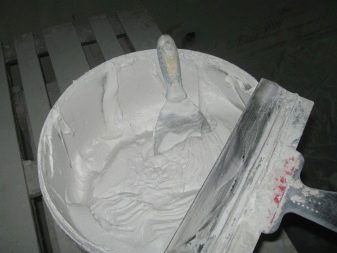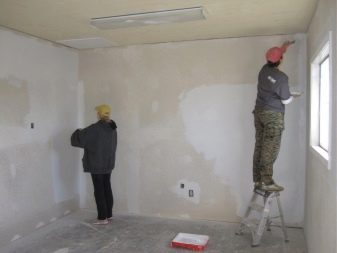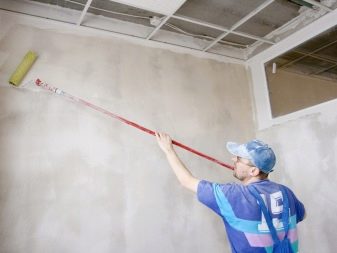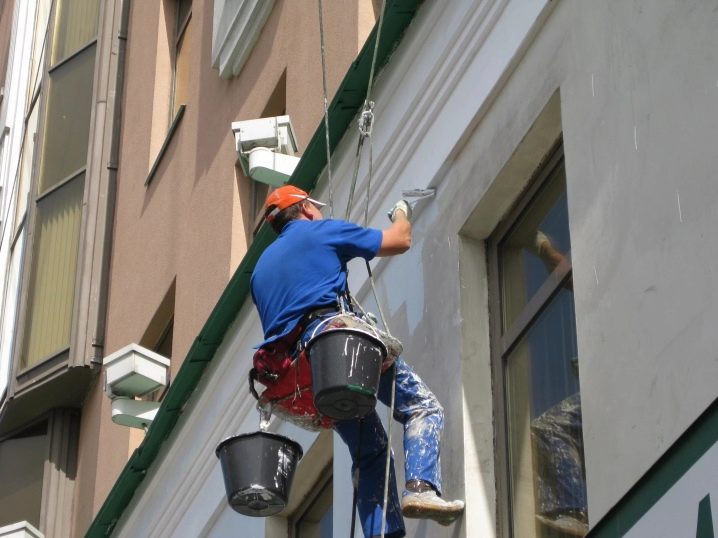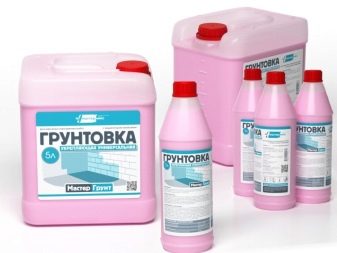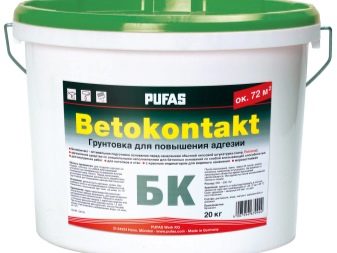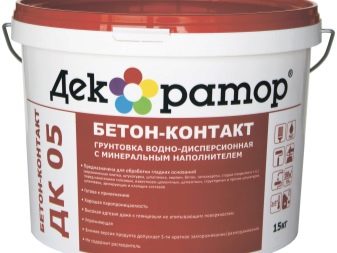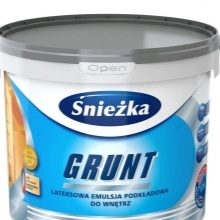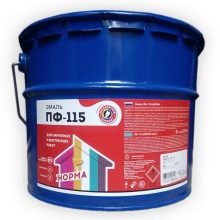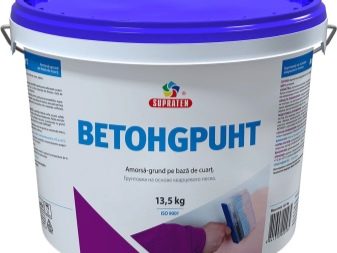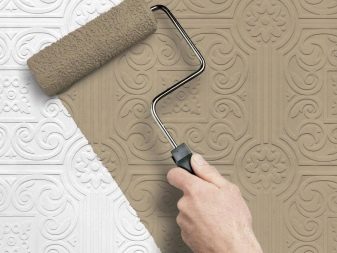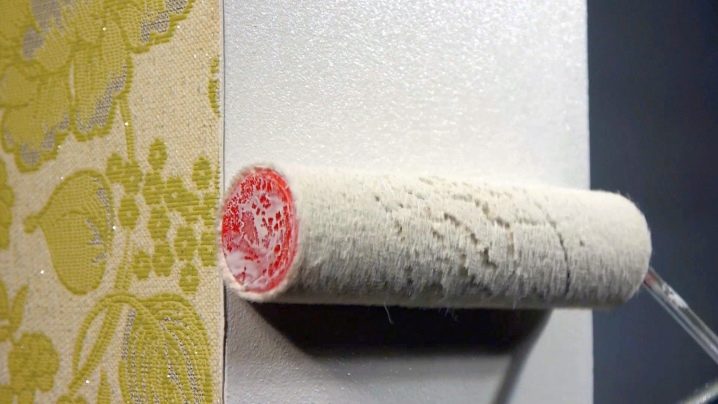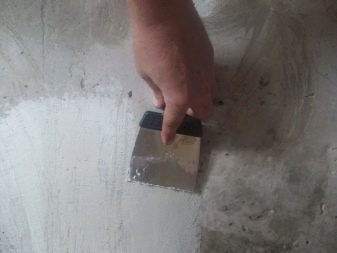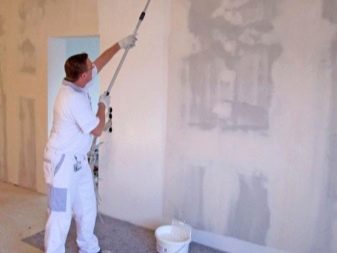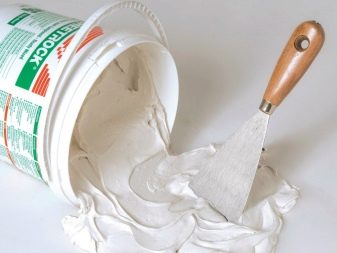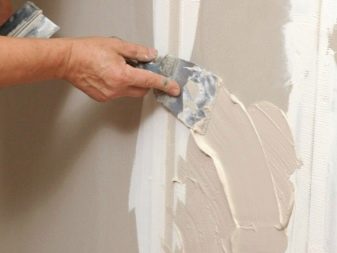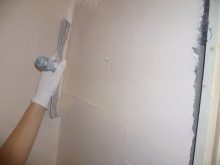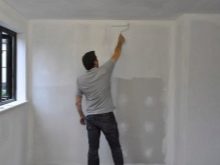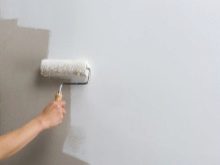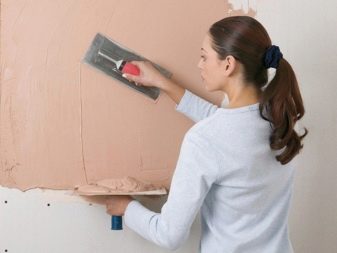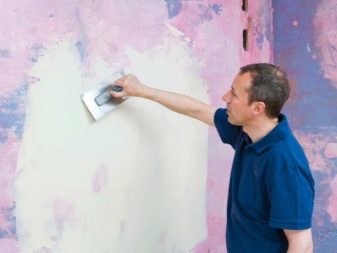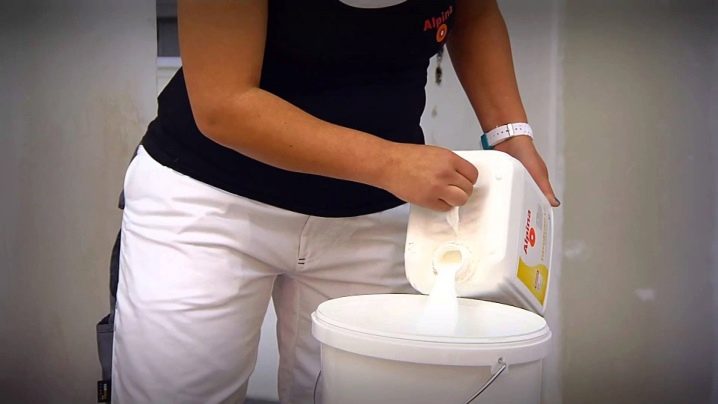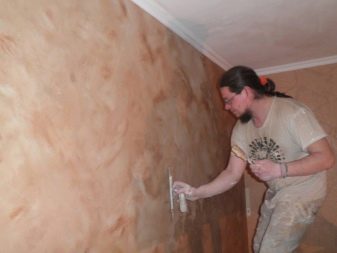Should the walls be primed before painting?
Priming of walls is very important stage of any repair. Soil is an excellent tool that, thanks to its chemical composition, provides a strong, reliable adhesion of materials and protects against the formation of fungus and mold. Easy handling even allows a novice to prepare a work surface for painting without problems. Also, this procedure is needed to strengthen the structure of materials and paintwork materials that can be affected by adverse environmental factors.
What is primer for?
The primer applied before painting is an important element of repair work. It is the first preparation layer that performs the task of ensuring the best adhesion (adhesion) between the wall and the upper covering layers of the coating.In other words, when finishing the paint will go easier and smoother.
To ensure the need for pre-priming of walls, you should know some useful properties and advantages of this composition.
- Contributes to the structural strengthening of the working surface.
- Provides moisture resistance of the processed material.
- Forms a protective layer on the surface.
- Fills cracks and levels the base. As a result, the paint falls better, and its consumption during the painting process is significantly reduced.
- Prevents paint cracking during operation.
To make the finish brighter, you can buy a colored primer. For rooms with high humidity, an antiseptic soil is used, which protects the walls from the formation of mold and fungus. The antiseptic destroys microorganisms and bacteria on the surface, and the acids that make up it help remove all unnecessary formations and raids.
The facade of the building before decorating is also treated with mortar. However, the surface during operation must be completely dry and protected from sunlight.
When interior trim primer often exposed floor and even the ceiling. This treatment improves their appearance, as well as hydrophobic and adhesive properties.
Kinds
Soil is classified according to the composition and type of the treated surface. But there are also universal types suitable for both concrete and brick or wooden foundations. Depending on the main function, the priming compositions are divided into the following types.
- Strengthening. They are designed to stabilize the working surface, increasing the degree of its density and hydrophobicity. Most often they cover porous materials. The composition penetrates into the material and then hardens, thus forming a kind of reinforcing frame. The depth of penetration of the soil can reach 10 cm.
- Adhesive. Such compositions serve to increase adhesion between the finishing material and the wall. They are applied immediately before painting, puttying or sticking. In this case, the soil penetrates the material by about 3 cm.
Depending on the composition of the primer is divided into types.
- Universal. They are most often found in hardware stores.They are used to carry out repair work on a small surface area or in the event that the use of paints and varnishes with good adhesive properties is further foreseen.
- Acrylic. They have a wide range of applications, suitable for almost all materials (concrete, brick, asbestos cement, cement plaster, wood building materials, foam plastic). As the name implies, this type of primer is made of acrylic resins, therefore it has excellent adhesion and moisture resistance. Also, the applied composition is characterized by harmlessness, lack of odor and fast drying speed. However, acrylic soil can not be stored in the cold, as the composition will lose its quality.
- Alkyd Suitable for metal, concrete and wood surfaces. The base of the metal composition protects against the appearance of corrosion, and of wood, chipboard, MDF and plywood - from destruction and wood beetle (bark beetle). However, these mixtures are not recommended for use when priming plaster walls, since after drying, a micro-relief layer forms on them, spoiling the quality of the subsequent painting.
- Mineral Consist of such mineral substances as cement, gypsum or lime. Used for processing the inside of walls made of concrete or silicate brick, as well as plastered surfaces.
- Shellacous. Most often, they ground wooden walls, as the composition is able to protect the surface of lumber from resinous excretions of conifers.
- Epoxy. Used for processing concrete surfaces. Due to the content of epoxy synthetic resin in them, the degree of strength of the coating significantly increases. It serves as a base for paint, linoleum and ceramic tiles.
- Aluminum. Suitable for wooden and metal substrates. Aluminum powder, which is part of, increases the degree of adhesion of paintwork material and base.
- Silicate. Used for the treatment of plastered brick prvehechnosti. They are highly resistant to sudden temperature changes, durability and hydrophobicity. They do not leave the mineralized layer on the wall and penetrate perfectly into the old cement-lime plaster, sand-lime brick and concrete.
- Polyvinyl acetate. Specialized priming compositions.Used with special polyvinyl acetate paints. Dry quickly.
The choice of priming composition is based on the condition and characteristics of the walls, as well as the type of surface. The most important parameters are the degree of porosity and friability, as well as the ability to hydrophobicity. For a dense and finely porous surface, an adhesive primer is chosen. If the material is friable, fragile and porous, then a strengthening deep-penetrating compound is needed. For rooms with high humidity, a hydrophobic primer is needed, which forms a reliable waterproofing layer on the surface. To enhance the effect, the solution is often applied in a double layer.
Wall preparation
Some owners believe that after plastering the walls do not need to be primed. If this is not done, the leveling layer at work will be much crumbling and absorb a lot of paint, which will significantly increase its consumption.
There are also special wallpapers that are designed for painting (paint flizelin). They should not be subjected to special training, but they should be grounded before pasting the wallpaper itself. The surface of the drywall is processed in two layers.The first layer is applied directly after installation, and the second layer - after puttying.
If a new paint is applied to the old layer, then it is necessary to prime such a surface only if there is a difference in color between the old and the new layer.
Before priming the room and walls need to be prepared.
- We remove everything that can interfere in the process. If there is no possibility to take out the furniture, then move it to the middle of the room.
- We keep indoor temperature from 5 to 25 degrees.
- Before the walls must be thoroughly cleaned of all dirt and grease stains. To do this, you can wash them with hot water with a small amount of ordinary detergent.
- If there are damages on the walls, then we smear them with putty, trying to achieve the most even surface. If necessary, carry out work to remove mold.
- We rub over the putty with a bar or sandpaper with an average grain. Be sure to wait until it is completely dry.
- A couple of hours before processing with a primer, we clean the work surface.
- Apply primer.
- The walls must be completely dry. If the humidity is increased, then ventilate the room or dry the walls with a heat gun.
Application technology
For work you will need the following tools:
- protective respirator, goggles and seals;
- brushes, roller (or spray), a narrow brush is needed for processing corners, switches and other complex structures, the roller should be 18-20 cm wide with an average synthetic bristle;
- a container with a mixture, for example, a painting bath, the presence of a depression and an extraction grid will make it possible to apply the soil more evenly and without surplus;
- degreasing agent;
- clean cloth and metal brush.
Training
- Wear personal protective equipment.
- Prepare the mixture. Dry soil mixed with warm water according to the instructions. We mix the prepared solution thoroughly before use.
- Pour the composition into the container. We dip the roller in it from two sides, and squeeze the excess on the grid.
- We provide good ventilation of the room in which the work will be carried out. Air temperature should be from 5 to 25 degrees, humidity should be at the level of 60-80%.
- Grinding the putty.
- Remove debris and settled dust with a broom or sweeping brush. If there are pockets of fungus or mold, then remove them with a metal brush and treat with concentratedantiseptic composition.
- Degrease the surface with technical acetone or any other degreasing agent.
Sequencing
- Apply the first layer on the wall. It should start with the most convenient place in the direction of top-down translational movements. In order not to form smudges, the roller should be slightly pressed, however, it is impossible to allow the solution to run off. For hard-to-reach areas, it is more convenient to purchase a special roller holder (telescopic bar).
- Apply the solution to the area of corners and other difficult areas with a narrow brush. Here you need to be especially attentive and accurate.
- Give the ground to dry. This can take from 3 to 6 hours. Understand: dry soil or not, you can wet spots that should disappear. The process should take place in natural conditions, you can not use a heat gun or battery.
- If necessary, apply the second layer, without waiting for the first layer to dry. The sequence is similar.
- After we put paint.
To process monolithic concrete, a soil with quartz sand is used, which is intended to enhance the adhesion of the concrete surface.
Features and useful tips on application technology
Features of surface treatment depend largely on what will be carried out finishing.
- Acrylic primer is required for water-based paint.
- If the surface will be finished with alkyd paint, then, accordingly, the same type of primer is needed.
- For paints with a narrow purpose, for example, electrically conductive, it is more expedient to choose a universal primer composition.
In the store, the soil is sold as a ready-made solution or dry mix. Differences between them in convenience and price. The concentrate is diluted with warm water and as a result they get as much soil as is necessary for work. Moreover, they are much cheaper than finished ones, since the price of the latter is increased due to the hermetic packaging (plastic bucket).
Based on how much the consistency of the mixture is liquid, and based on the area of the wall, choose the tool with which it will be applied. It can be rollers, brushes, spray, and for thick compositions it is more convenient to use a plaster spatula.
Useful tips from the masters.
- In no case can not mix soils from different manufacturers, even if they are designed for the same material.In any case, the chemical composition will vary slightly, which can lead to loss of functionality.
- Excludes storage in the cold and especially in the cold. Freezing can also lead to loss of functionality and properties.
- Be sure to read the instructions on the packaging stated by the manufacturer before starting work.
- It is possible to degrease a working surface with nitrosolvents or gasoline extraction.
- To check how strong the primer film is, lightly press it with the tip of any metal object. On the coating should not form gaps and cracks.
On whether to primed the walls before painting, see the following video.



